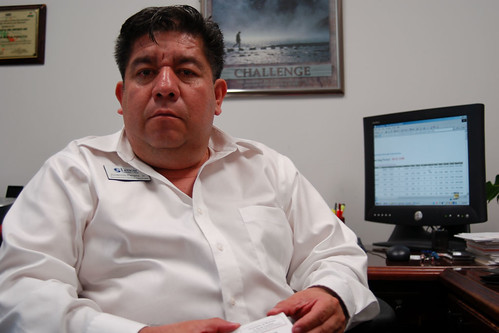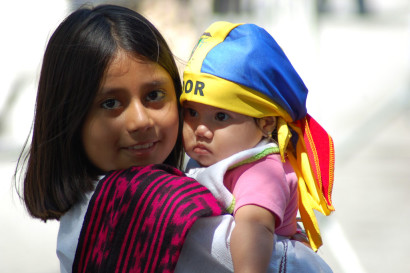In an interesting update to the ongoing national debate over police officers enforcing immigration law (and to Feet in 2 Worlds’ reporting on the issue), Hartford, CT’s City Council voted unanimously Monday to prohibit all city workers, including police officers, from asking about residents’ immigration status except in criminal cases and from turning over undocumented immigrants to federal authorities solely due to their lack of legal status. The local ordinance, which must still be approved by Mayor Eddie Perez, also bars city employees from asking residents about their immigration status as they access city services.
Perez says he supports the idea behind the resolution, but it’s still not clear if he will approve it: in the past he‘s cited a policy (issued by Hartford Chief of Police Daryl Roberts in March 2008 that allows officers to only inquire about the immigration status of those involved in a criminal investigation) as enough to encourage city residents to cooperate with police.
The new resolution expands upon the existing policy by prohibiting city workers from asking about immigration status based on the rationale that immigration law is a federal issue and therefore not under the jurisdiction of local police, which are only responsible for enforcing criminal laws.
The vote comes after a public firestorm engulfed Hartford last month during public hearings where dozens of residents argued for the resolution, and means Hartford could join the ranks of several other cities including New York, Los Angeles, Newark, and its Connecticut neighbor New Haven, which have all enacted similar ‘don’t ask, don’t tell’ city policies protecting residents’ immigration status. Metropolitan police chiefs such as New York’s Ray Kelly and Los Angeles’ Bill Bratton have argued in favor of such policies in the name of community policing and to encourage immigrant witnesses and crime victims to come forward to cooperate with law enforcement officials. Feet in 2 Worlds reported on the controversy in Connecticut last month as often emotional and heated public hearings raged on the issue.
Hartford’s pending decision to grant its residents confidentiality of their immigration status comes as the federal government seeks more ways to enforce the nation’s immigration laws and deport undocumented immigrants to their home countries via a menu of programs; an approach widely excoriated by immigrant rights advocates.
Immigration and Customs Enforcement (ICE), the federal agency responsible for enforcing immigration laws, announced last month that it had deported over 270,000 undocumented immigrants in 2007 – an agency record. In May, criminal defense attorneys and immigrant rights advocates alike denounced the nation’s largest immigration raid in history at the now-infamous Agriprocessors plant in Postville, IA; over 300 undocumented workers were put into fast-track deportation proceedings and whisked out of the country amid questions of whether they were granted due process.
And last month, the Department of Homeland Security announced a new ‘self-deportation’ pilot program, ‘Operation Scheduled Departure’, which invites undocumented residents to volunteer to deport themselves by coming forward to immigration authorities. In return, they are not put in detention facilities and are given 90 days to wind up their affairs in the US before returning to their home countries. As of last week, only one individual had volunteered to leave the country through the program.
Meanwhile, the Department of Homeland Security, ICE’s parent, is actively seeking to enroll local police departments in partnership programs that train local law enforcement officers as immigration agents. Dubbed 287(g) programs for the section of federal immigration law they reference, several cities and counties nationwide have entered into such agreements– notably Arizona’s Maricopa County, which includes metropolitan Phoenix.
Despite growing signs the practice is extremely expensive (a recent investigation by Arizona’s East Valley Tribune found Maricopa County’s participation in the program resulted in a $1.3 million deficit; had a negative impact on arrest rates (they plunged by 75% between 2005 and 2007); and slowed response times (two-thirds of patrol cars responding to the most serious 911 calls arrived late), counties and cities nationwide continue to sign up for the program, particularly given the continued federal legislative vacuum on the issue. Feet in 2 Worlds’ Diego Graglia’s recent dispatches from Manassas, VA illustrate the arguments and heightened emotions behind both sides’ views on the issue.
Though Connecticut is a small state, Hartford’s neighbor Danbury (less than 50 miles away) has taken a dramatically different approach to its undocumented residents and signed a 287(g) agreement with federal authorities. Meanwhile, local domestic violence and immigrant groups joined a new statewide task force convened by the Speaker of the State House of Representativesthat hopes to determine why many of the city’s immigrant women and other victims of domestic abuse are not reporting crimes and serving as witnesses in criminal investigations.




